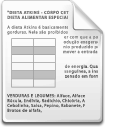The effects of fish stocking on food-web dynamics and ecosystem stability
Uusi-Heikkilä, S., Perälä, T. and Kuparinen, A. (2018). The effects of fish stocking on food-web dynamics and ecosystem stability. 5th European Congress of Conservation Biology. doi: 10.17011/conference/eccb2018/107419
Päivämäärä
2018Tekijänoikeudet
© the Authors, 2018
Fish stocking is used worldwide for conservation and management purposes but its effects on food-web dynamics and ecosystem stability are poorly known. To better understand these effects, an empirically validated network model was used to study a well-studied lake ecosystem. Two stocking scenarios with two native fish species valuable for fishing were simulated. In the first scenario, whitefish larvae were stocked in the ecosystem. This led to a minor increase in adult whitefish biomasses and decreased perch biomasses. In the second scenario, also perch larvae were stocked in the ecosystem. This led to a decrease in whitefish biomasses and in the biomass of the old perch, and destabilized the ecosystem. The effects of stocking depend on the species’ position in the food web and thus cannot be assessed without considering interacting species. Our results show that fish stocking can change dynamics of an aquatic food web and lead to undesired outcomes from both management and conservation perspective. ...
...
 ...
...
Julkaisija
Open Science Centre, University of JyväskyläKonferenssi
ECCB2018: 5th European Congress of Conservation Biology. 12th - 15th of June 2018, Jyväskylä, Finland
Alkuperäislähde
https://peerageofscience.org/conference/eccb2018/107419/Metadata
Näytä kaikki kuvailutiedotKokoelmat
- ECCB 2018 [712]
Lisenssi
Samankaltainen aineisto
Näytetään aineistoja, joilla on samankaltainen nimeke tai asiasanat.
-
Food-web complexity, consumer behavior, and diet specialism: impacts on ecosystem stability
Perälä, Tommi; Kuisma, Mikael; Uusi-Heikkilä, Silva; Kuparinen, Anna (Springer Nature, 2024)Ecological stability is a fundamental aspect of food web dynamics. In this study, we explore the factors influencing stability in complex ecological networks, characterizing it through biomass oscillations and species ... -
Balancing Stability and Agility: the Role Software Ecosystems in Enhancing Public Service Delivery in the Public Sector
Kolehmainen, Taija (2024)This is an article-based Master's thesis that explores how software ecosystems, integrating public and private partners, improve public service delivery by balancing stability and agility. Public sector organizations face ... -
Cross-ecosystem effects of stream restoration: biodiversity and ecosystem functioning
Muotka, Timo (Open Science Centre, University of Jyväskylä, 2018)Stream restoration in Finland has traditionally focused on larger rivers, aiming to enhance the well-being of salmonid fishes. The key strategy has been to increase in-stream habitat heterogeneity, usually with at least ... -
Restoration of forestry-drained boreal peatland ecosystems can effectively stop and reverse ecosystem degradation
Elo, Merja; Kareksela, Santtu; Ovaskainen, Otso; Abrego, Nerea; Niku, Jenni; Taskinen, Sara; Aapala, Kaisu; Kotiaho, Janne S. (Nature Publishing Group, 2024)Ecosystem restoration will increase following the ambitious international targets, which calls for a rigorous evaluation of restoration effectiveness. Here, we present results from a long-term before-after control-impact ... -
Effect of Mg2+ ions on competitive metal ions adsorption/desorption on magnesium ferrite : mechanism, reusability and stability studies
Ivanets, Andrei; Prozorovich, Vladimir; Kouznetsova, Tatyana; Dontsova, Tetiana; Yanushevska, Olena; Hosseini-Bandegharaei, Ahmad; Srivastava, Varsha; Sillanpää, Mika (Elsevier, 2021)The adsorption behavior of magnesium ferrite in single- and multicomponent metal ions solutions in the presence of Mg2+ ions were studied. A dramatic decrease in the adsorption capacity of magnesium ferrite towards Mn2+, ...
Ellei toisin mainittu, julkisesti saatavilla olevia JYX-metatietoja (poislukien tiivistelmät) saa vapaasti uudelleenkäyttää CC0-lisenssillä.

